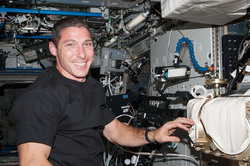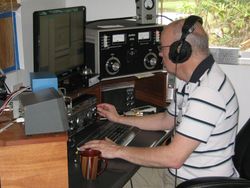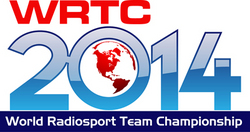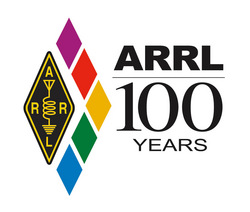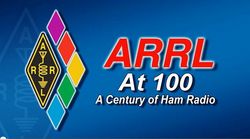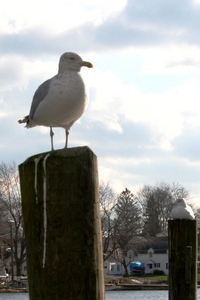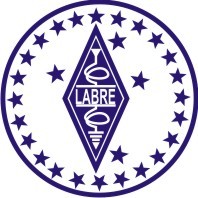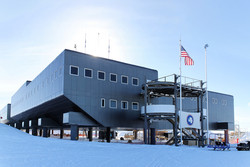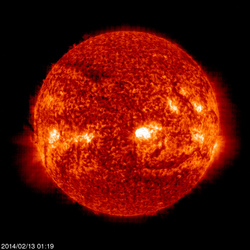 February 13, 2014 John E. Ross, KD8IDJ, Editor
| |||||||||||||||||
DX: Amsterdam Island FT5ZM DXpedition Concludes Operation
The FT5ZM DXpedition has shut down, although the trip home remains. That news may be welcome to non-DXers who have been contending with huge and sometimes chaotic split-operation pileups that occasionally occupied substantial segments of spectrum, but disappointing for operators who were unsuccessful in snagging this rare one. The Amsterdam Island DXpedition team logged on the order of 165,000 contacts on SSB, CW and RTTY. AA4SC had the honor of completing the final FT5ZM contact -- on February 12 at 0220 UTC. Amsterdam Island is the seventh most-wanted DXCC entity, according to the ClubLog DXCC Most Wanted List. "All the team members are now safely aboard the Braveheart as of 0520 UTC," FT5ZM Pilot Station Val Hotzfeld, NV9L, reported on February 13. "There is a strong storm right behind them. This should make for rough seas but favorable winds pushing them to Perth." Earlier seas were too rough to load the boat, leaving the DXpedition team and gear stuck on shore.
All FT5ZM logs have been uploaded to ClubLog, and the Online QSL Request Service (OQRS) for FT5ZM now is online. The budget for the DXpedition was $450,000, which, to date, has not been met. More information on the Amsterdam Island DXpedition budget and on the DXpedition is available on the Amsterdam Island FT5DX website. The ARRL made a Colvin Award grant to help support the DXpedition. -- Thanks to The Daily DX, FT5ZM Ham Radio in Space: ISS CubeSat Deployment, "Ham Video" Commissioning Postponed
Two Amateur Radio-related activities aboard the International Space Station have been postponed. The deployment of Amateur Radio CubeSats planned for February 6 was put off, and a new date has not yet been announced. Launch provider NanoRacks announced the deployment of two PlanetLabs commercial imaging satellites on February 11, however, so the ham radio satellites may not be far behind. NASA reported that astronaut Koichi Wakata, KC5ZTA, ran into a little difficulty while installing the CubeSat deployer mechanism that will be used in concert with the Kibo robotic arm. That setback and the fact that NASA also wanted to make sure the CubeSats did not fall into the intended orbit of the Global Precipitation Measurement satellite, accounted for the delay. The CubeSats were aboard the Cygnus freighter that launched from Virginia's Eastern Shore January 9. The satellites include Lithuania's first two satellites -- LituanicaSat-1 and LitSat-1 -- as well as ArduSat-2, UAPSat-1 -- Peru's third satellite -- and the 915 MHz SkyCube. LituanicaSat-1 carries a 145/435 MHz FM transponder, while LitSat-1 will have a 435/145 MHz linear SSB/CW transponder. The Kaunas University of Technology developed LituanicaSAT-1, while the Lithuanian Space Federation developed LitSat-1. Mineo Wakita, JE9PEL, has posted details of these and other Amateur Radio satellites due for deployment this month.
Meanwhile, the European Space Agency has postponed the commissioning of the "Ham Video" system aboard the ISS Columbus module. That activity had been set to start last week as well. ARISS-Europe Chairman Gaston Bertels, ON4WF, said the four commissioning steps most likely will take place on weekend dates in March, and that a couple of the steps may be combined to condense the process. "The agenda is still to be finalized," he said. NASA astronaut Mike Hopkins, KF5LJG, was to have installed the Ham TV equipment last week and connected the 2.4 GHz transmitter to the ARISS 41 antenna already on Columbus. He was involved with another onboard project on the day the installation was scheduled, however. Hopkins also will be involved with the Ham Video commissioning process. Once operational, the Ham Video transmitter will be used for ARISS educational contacts with schools in Europe. There are no immediate plans to deploy downlink video for US ARISS school events, in part because no North American ground stations have been planned. -- AMSAT-UK; ARISS-EU; NASA Education: Winter Edition of New Radio Waves E-Newsletter Now Available The Winter 2014 edition of Radio Waves, ARRL's redesigned and renamed e-newsletter for instructors and teachers, is now available on the ARRL website. Among the selection of articles: "High School Students Put Packet Radio to Work for Local Environmental Study," "Club Boasts Fourfold Increase in New Licensees/Upgrades," "Instructor Corner -- News, Ideas, Support," and "In The Classroom: Teaching Ohm's Law."
ARRL Education Services Manager Debra Johnson, K1DMJ, who edits the newsletter, said Radio Waves aims to provide information that will help educators and instructors with licensing or classroom instruction and to share experiences and stories of other instructors and teachers that may offer ideas for readers to incorporate into their own activities. Johnson explained that the redesign was due in part to a desire to include links to the wealth of information available on the ARRL website and elsewhere. "We can bring together information that exists in many places more effectively than we could in the past," she said. "We provide the information in newsletter format direct to your mailbox as a convenience." Johnson said readers can review the current edition or earlier issues -- including an archive of past editions of the earlier Instructor/Teacher E-Letter -- for information and ideas about licensing instruction, and for stories about how ham radio is being used in the classroom for learning and fun. ARRL-registered volunteer instructors and classroom teachers are automatically subscribed to receive Radio Waves. Others may sign up to receive e-mail notification of new issues; click on "Edit your Profile" at the top of the ARRL website home page. Then, click on "Edit Email Subscriptions" and check the box for "ARRL Instructor/Teacher E-Letter." Radiosport: Work the World During the ARRL International DX Contest (CW)! The CW weekend of the ARRL International DX Contest is February 15-16 (UTC). If you like CW DX, this event "keeps the DX aiming in your direction," as Ward Silver, N0AX, put it in his ARRL Contest Update e-newsletter. "With propagation so good lately, this might be a good weekend to spend on the radio," he added.
One of the premier events on the contest calendar, the ARRL DX encourages participants to expand their knowledge of DX propagation on the HF and MF bands, and to improve operating skills and station capability by creating a competition in which DX stations may only contact stations in the US and Canada. W/VE amateurs work as many DX stations in as many DXCC entities as possible on 160, 80, 40, 20, 15, and 10 meters DX stations work as many US and Canadian stations in as many of the 48 contiguous US states and Canadian provinces as possible. US and Canadian stations send a signal report and their state or province abbreviation. DX stations send a signal report and output power. There are entry categories for individual operators and multioperator teams as well as a choice of power levels in each category. Even contest newcomers and low-power or QRP operators will find a niche in the ARRL International DX Contest. It's a terrific opportunity to boost DXCC totals too. The ARRL International DX Contest phone weekend will take place March 1-2, 2014. Radiosport: ARRL Contest Branch Catching Up There have been some changes in the ARRL Contest Branch following the January 23 resignation of Mike DeChristopher, N1TA, as ARRL Contest Manager. Since his departure, a team of ARRL staffers that includes former Contest Branch managers Dan Henderson, N1ND, and Sean Kutzko, KX9X, have been addressing the needs of the Contest Branch until a new manager is in place. ARRL Membership & Volunteer Services Manager Dave Patton, NN1N, is heading up the team. In addition to maintaining day-to-day Contest Branch activities, Kutzko said, the team has several immediate objectives -- the first to eliminate the backlog of overdue awards certificates and plaques. These have been going out on a regular basis over the past couple of weeks.
"With the help of several ARRL staffers in the Awards Branch, we have sent out over 5000 award certificates in the last two weeks," Kutzko said. These include certificates for the 2012 ARRL November Sweepstakes, the 2012 September VHF Contest, the 2012 August UHF Contest, and the 2013 RTTY Roundup. Another 1100 certificates for the 2012 ARRL 10 Meter Contest are in the mail queue. "In addition, plaques for the 2012 CW Sweepstakes and 2013 RTTY Roundup were shipped," Kutzko said, adding that 2012 plaques for the phone Sweepstakes should be going out within 3 weeks. "We will continue to aggressively work on the backlog of overdue awards and hope to be caught up soon," Kutzko said. Contesters can monitor the team's progress on the ARRL website, which is updated regularly. Kutzko said the team does not foresee any delays in the publication of contest results online or in QST. Several contest results tables, log check reports, and databases have been uploaded to the ARRL website in the past 2 weeks. The extended article on the ARRL September VHF Contest has been posted on the Contest Results Articles page, and log check reports are now available for the 2013 ARRL June VHF and August UHF contests. "Finally, we are working together to take care of customer service inquiries to the Contest Branch and reply as rapidly as possible," Kutzko said, expressing regret for "the delays in communications and awards fulfillment that contesters have experienced." "The past few months have not been up to ARRL standards; we apologize for this and are working hard to correct it," he concluded. Direct any ARRL contest-related questions to Dave Patton, NN1N, or Sean Kutzko, KX9X. -- Thanks to ARRL Media and Public Relations Manager Sean Kutzko, KX9X, and the ARRL Contest Update Radiosport: WRTC-2014 Announces Three Sponsored Teams for July Competition
World Radiosport Team Championship 2014 (WRTC-2014) has announced pairings for three of the four "sponsored" teams that will participate in the July event. The WRTC-2014 Steering Committee permits each WRTC organizer to offer the opportunity for sponsors to name teams outside of the normal qualification process as a fund-raising mechanism. The first three sponsorships were on a first-come, first-served basis. A fourth sponsored team slot will be available by auction. The "Latitude 13" will consist of Tom Georgens, W2SC, and Dave Mueller, N2NL. Both are past WRTC competitors. The name reflects the fact that both contesters typically operate at 13° latitude. "RadioTeam Azores," sponsored by the Azores Tourism Association, will consist of Martti Laine, OH2BH, and Ville Hiilesmaa, OH2MM. Laine was the contest chairman of the first WRTC in 1990 and co-chair of WRTC-2002 in Finland. Hiilesmaa has been a WRTC organizer, referee, and judge. The "Brazil-Bulgaria Friendship Team" is sponsored by a consortium that includes the Araucaria DX Group; the Sao Paulo section of LABRE; K1LZ, and the Bulgarian Federation of Radio Amateurs (BFRA). They have appointed Soni Leite, PY1NX, and Atanas "Nasko" Koitchev, LZ3YY/LZ9R. Both are experienced operators with world-class credentials. The auction to determine the final sponsored team will be held on March 8. Interested parties should contact WRTC Chairman Doug Grant, K1DG, to register. WRTC-2014 will take place July 8-14 in New England, in conjunction with the IARU HF Championship event. Regulatory: RAC Cautions Regulator: Tower Rules Changes Should Not Affect Hams Radio Amateurs of Canada (RAC) has told its membership that it will advise telecommunications regulator Industry Canada (IC) "in the strongest of terms" that no changes be made in tower siting rules that might negatively affect existing Amateur Radio antenna installations. A February 5 announcement, "Harper Government Making Changes to Cell Tower Placement Rules," and a subsequent notice stating that changes to the current regulations would follow, prompted the RAC warning.
"RAC does not believe this policy change announcement was generated by problems caused by the Amateur Radio community," assured Glenn MacDonell, VE3XRA, RAC's Vice President of Regulatory Affairs, adding that the current 15 meter (maximum) height "has worked well for several years." Speaking on the RAC's behalf, MacDonell pointed out that Amateur Radio antenna structures differ in many ways from cell phone towers in that they are typically smaller and less obtrusive, are owned by individuals and typically sited on the user's residential property, and are in intermittent use. "RAC has always been willing to work with Industry Canada in consultations [regulatory proceedings -- Ed] that take into account the needs of the general community and Amateur Radio operators," MacDonell said. "Radio amateurs are most noticed by the general community when they fill in for failing communications systems, such as has happened with floods and ice storms, or provide communications for community events," he concluded. "We must be very careful not to make it needlessly difficult to install antennas, as that would, over time, reduce the number of people able to provide these important community services." ARRL Centennial: W1AW Centennial Operations Now in California, Wisconsin The ARRL Centennial "W1AW WAS" operations taking place throughout 2014 from each of the 50 states are in California (W1AW/6) and Wisconsin (W1AW/9). At 0000 UTC on February 19 (the evening of February 18 in US time zones), operations will relocate to Michigan (W1AW/8) and Florida (W1AW/4). During 2014 W1AW will be on the air from every state (at least twice) and from most US territories, and it will be easy to work all states solely by contacting W1AW portable operations.
In conjunction with the 100th anniversary of the ARRL, the ARRL Centennial QSO Party kicked off January 1 for a year-long operating event in which participants can accumulate points and win awards. The event is open to all, although only ARRL members and appointees, elected officials, HQ staff and W1AW are worth ARRL Centennial QSO Party points. Working W1AW/x from each state is worth 5 points per contact. To earn the "Worked all States with W1AW Award," work W1AW operating portable from all 50 states. (Working W1AW or W100AW in Connecticut does not count for Connecticut, however. For award credit, participants must work W1AW/1 in Connecticut.) A W1AW WAS certificate and plaque will be available. ARRL Centennial: A Century of Amateur Radio and the ARRL American hams won high praise for their considerable help to the military during the Great War. However, at the end of the war, hearings in Congress began on an effort to put all radio matters under the control of the US Navy. It was expected that the Navy would abolish Amateur Radio -- despite the debt owed to hams for their war service. ARRL President Maxim and representatives of many of the large radio clubs in the country attended the hearings and spoke against the proposed legislation. The ARRL called on its membership and on families of hams killed in action to speak out in opposition to the bill, which they did -- in large numbers, and with emotional pleas. So, despite a strong effort to push the bill through, it died in committee and never reached the floor.
On April 12, 1919, five months after the armistice was signed, the US Navy Department announced that the ban on amateur receiving would be lifted, but that the ban on transmitting would continue until the President of the United States officially announced that a state of peace existed. Three months later, on July 24, the Navy tried again. The Secretary of the Navy wrote the President of the Senate, asking that legislation be enacted to give the Navy a monopoly on all oceanic and international radio communication. This effort was also defeated by the combined forces of American radio interests, including the efforts of the ARRL. In August, the Navy again postponed the removal of the ban on transmitting by hams. A bill was introduced in Congress to force the Navy to lift the ban. Finally, under the threat of congressional action, the Navy, on September 26, 1919, lifted the transmitting ban and ceded authority over radio matters to the Department of Commerce. Amateur Radio was back in business! In this year-long overview of the first 100 years of the ARRL, I've lingered over the early years simply because of their great importance. Without the early efforts of the League, its officers, and its members, we likely would not have Amateur Radio as it is today. Perhaps there would be no Amateur Radio at all. Now we'll move on through our retrospective at a faster pace. Hams get on the air again! Technology makes great strides! The ARRL continues its leadership roll. Stay tuned! -- Al Brogdon, W1AB Milestones: DXer, Contester Victor Paounoff, N4XR, SK Victor Paounoff, N4XR, of Crossville, Tennessee, and formerly of Gettysburg, Pennsylvania, died February 10. He was 96. Paounoff became licensed in the 1930s as W1EOB while a teenager living in Connecticut. He later became a well-known on-the-air presence from Haiti, where he operated as HH2VP. Paounoff was a founding member of the Yankee Clipper Contest Club and a member of its Hall of Fame for his contributions to contesting.
Paounoff joined the US Navy prior to World War II and served in both the European and Pacific theaters as a radioman. Before the war ended, he had received a commission. Following WW II, he was a quality control engineer for General Instrument, a job that took him to Japan, Haiti, and elsewhere around the globe. Paounoff maintained his enthusiasm for Amateur Radio throughout his long life, taking part in contests and finishing with the top world score on at least a couple of occasions. He also enjoyed bowling and remained a Boston Red Sox fan. He had 384 DXCC entities confirmed, including deleted entities. -- Thanks to Pete Chamalian, W1RM, and The Daily DX In Brief ⦠ARRL Headquarters is Closed on Monday, February 17: ARRL Headquarters will be closed on Presidents Day, Monday, February 17, and there will be no W1AW bulletin or code practice transmissions that day. Headquarters will be open for business Tuesday, February 18, at 8 AM ET. We wish everyone a safe and enjoyable holiday! ⦠First-Time W1AW/KG4 Guantanamo Bay Operation Set: As part of ARRL's Centennial QSO Party, Ed Williams, KN4KL, and Bill Verebely, W4WV, will activate W1AW/KG4 from Guantanamo Bay, Cuba in late February and early March! The operation will take place Wednesday, February 26, through Tuesday, March 4 UTC. This may mark the first time the US Navy has authorized the use of a "portable" call sign from Gitmo. QSL via ARRL Headquarters (225 Main St, Newington, CT 06111) or Logbook of The World (LoTW).
⦠Maine Sea Gull Net Celebrates Diamond Jubilee: The Maine Sea Gull Net (SGN) marks its 75th anniversary in 2014, making it the oldest or among the oldest nets still in service. "We are celebrating throughout the year with various activities," Net Manager Jerry Burns, K1GUP, of Carmel, Maine, told ARRL. "A month ago on the net I played a recording from 1989 of a QSO I had with the net's founder, Win Ramsdell, W1FBJ (SK), in which he recounted the beginnings of the net and his election as Maine's first 'phone man' Section Communications Manager -- when CW reigned as the mover of traffic. He also told about the net's involvement in the fires of 1947." Burns recently ran a session on AM, "netting" 38 check-ins, all but two on AM. "It was so much like the 'good old days!'" he said. Burns invited past net control operators and visitors to check in anytime. At hamfests he'll offer net certificates with a 75th anniversary ribbon attached, and down the road he'll air a tape of a 1978 net. The Sea Gull Net meets at 5 PM ET, Mondays through Saturdays, on 3940 kHz. ⦠Olympic Special Event Stations On the Air: Among the dozens of special event call signs on the air to mark the 2014 Winter Olympics and the 2014 Paralympic Games is R0000O (that's R plus four zeros and the letter O, to symbolize the five interlocked Olympic rings). Special event stations will be active until March 31. Click on the special event call sign in the Mega Log page list for more information and QSL routes (not all call signs are hyperlinks).
⦠Brazil's LABRE Celebrating its 80th Anniversary: The Liga de Amadores Brasileiros de Radio Emissao (LABRE) -- Brazil's national Amateur Radio organization and IARU member-society -- was founded 80 years ago on February 2, 1934. LABRE is marking the event with a massive special event operation. Stations with commemorative "ZZ80" call signs in all 26 Brazilian states and the Federal District are on the air through the end of February. The two-letter suffix of each station represents the state from which it is operating. Stations will be on all HF bands and on 2 meters using various modes. LABRE will confirm all contacts with a QSL card. QSL to LABRE 80 Years, Caixa Postal 4, 70351-970 Brasilia DF, Brazil. ⦠Poland Allocates New Ham Bands at Opposite Ends of the Amateur Radio Spectrum: Radio Amateurs in Poland this month will gain access to two new Amateur Radio bands at opposite ends of the spectrum -- 472 kHz and 122.25 GHz. The new 472-479 kHz and 122.250-123.000 GHz bands both are allocated to the Amateur Service on a secondary basis. They become available in Poland on February 18. -- Thanks to Paweà  Zakrzewski, SP7TEV, PZK IARU Liaison Office
⦠South Pole Station's KC4AAA Now on CW: Joseph Musachia, W5FJG, a satellite engineer at Amundsen-Scott South Pole Station, reports that CW capability has been restored at KC4AAA, and operators there now are trying to get up and running on PSK31 and RTTY within the next few weeks. In late January a new 3 element 17 meter monobander was installed at 45 feet, fixed at 105° for North America. Look for KC4AAA at around 18111 kHz. Elsewhere in Antarctica, RI1ANP is on the air from Progress Station, with Nikolay Zinin, RW6ACM, as the main operator. He operates CW, SSB, and digital modes. Word is that Antarctica may come to Top Band in March. George Taft, W8UVZ, is assisting. Oleg Sakharov, UA1PBA, at RI1ANR/R1ANR (Antarctica Novo Runway), reported that a 160 meter vertical was nearly ready, and he hoped to be active this month. (RI- prefix call signs may show up as "European Russia" in loggers and online databases.) -- Thanks to The Daily DX The K7RA Solar Update There seems to be a disconnect between daily sunspot numbers and solar flux over the past reporting week (February 6-12), with the average daily sunspot number rising 28 points to 184.3, and average daily solar flux declining 8.5 points to 171.9. Perhaps this reflects the general weakness in the energy and magnetic complexity of recent sunspots. Many days we see a substantial number of sunspots, but they don't produce much activity.
We did see unsettled geomagnetic conditions on February 8, though, when the planetary A index reached 23, caused by a coronal mass ejection (CME) the day before. At 2351 UTC on February 12, the Australian Space Forecast Centre released this geomagnetic warning: "INCREASED GEOMAGNETIC ACTIVITY EXPECTED DUE TO CORONAL MASS EJECTION FROM 13-15 FEBRUARY 2014." They predict a minor geomagnetic storm on Saturday, February 15. Too bad, since that will be the first day of the ARRL International DX Contest, CW. The latest forecast from NOAA/USAF has planetary A index at 5 on February 13, 25 on February 14, 40 on February 15, 18 on February 16, 12 on February 17, 5 on February 18-24, 8 on February 25, 5 on February 26 through March 1, 12 on March 2, 5 on March 3-6, and 8 on March 7-9, before dropping back to 5 until February 16. Predicted solar flux values are 155 on February 13, 150 on February 14-15, 145 on February 16-17, 140 on February 18-19, 145 on February 20-22, then 150, 160, 170, 180, 185, 190 and 200 on February 23 through March 1, then 195, 200, 205 and 210 on March 2-5, before declining to a low of 130 on March 14. Last week's Friday bulletin reported my discovery of a first-edition Radio Amateur's Handbook at a local library. Now I know why it was in such wonderful condition. It turned out to be a 2006 reproduction on the book's 90th anniversary, shipped to buyers who placed advanced orders for the 2006 ARRL Handbook for Radiocommunications. Tad Cook invites reports and observations. Just Ahead in Radiosport
Upcoming ARRL Section, State and Division Conventions and Events
Find conventions and hamfests in your area.
ARRL -- Your One-Stop Resource for Amateur Radio News and Information Join or Renew Today! ARRL membership includes QST, Amateur Radio's most popular and informative journal, delivered to your mailbox each month. Listen to ARRL Audio News, available every Friday. Subscribe to... NCJ -- National Contest Journal. Published bi-monthly, features articles by top contesters, letters, hints, statistics, scores, NA Sprint and QSO Parties. QEX -- A Forum for Communications Experimenters. Published bi-monthly, features technical articles, construction projects, columns and other items of interest to radio amateurs and communications professionals. Free of charge to ARRL members: Subscribe to the ARES E-Letter (monthly public service and emergency communications news), the ARRL Contest Update (bi-weekly contest newsletter), Division and Section news alerts -- and much more! | |||||||||||||||||
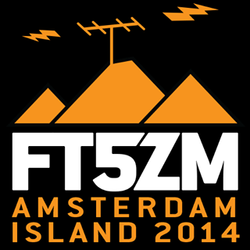
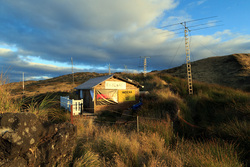
.jpg)
